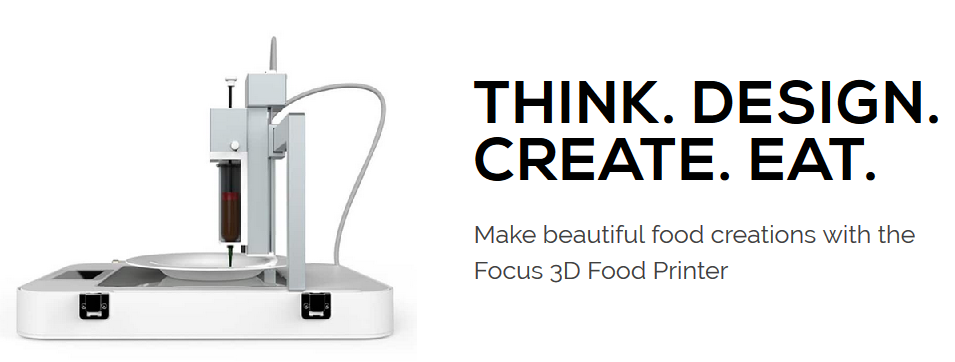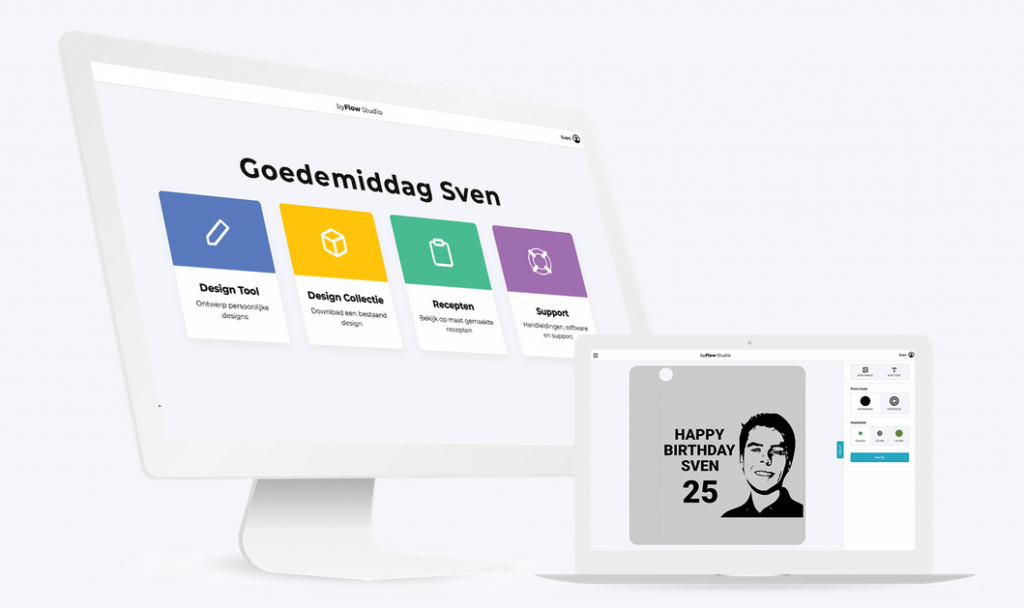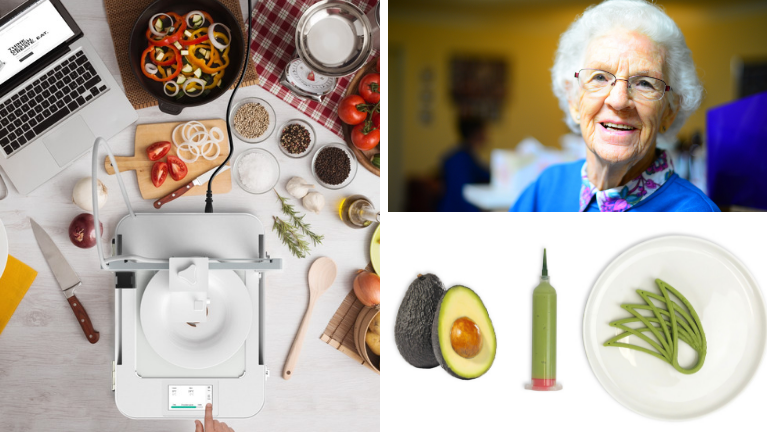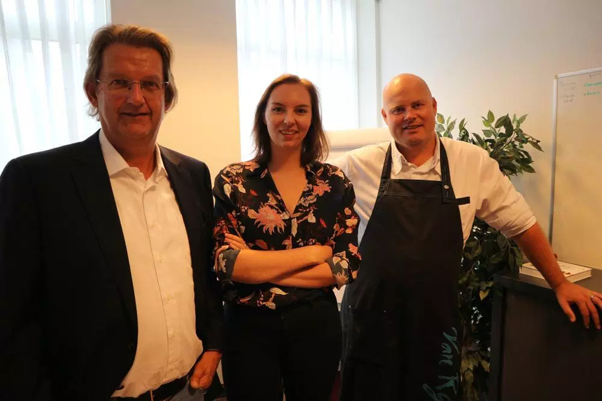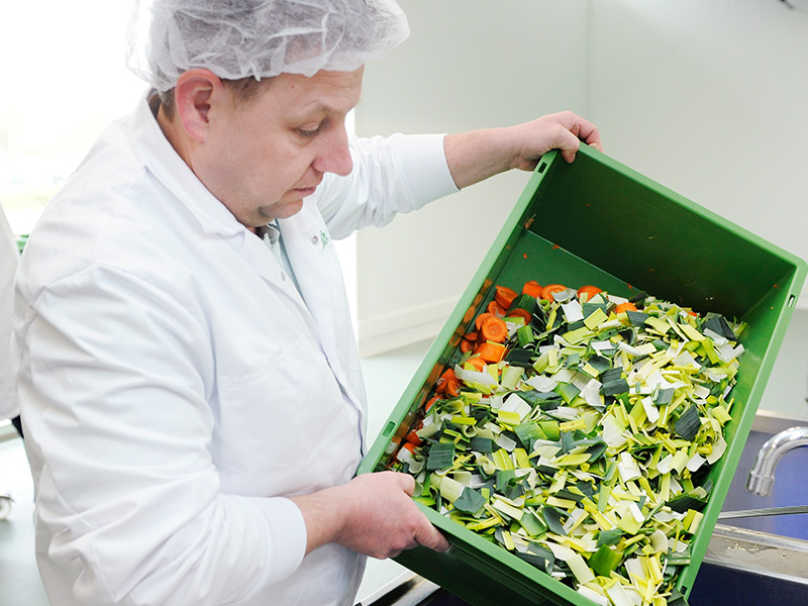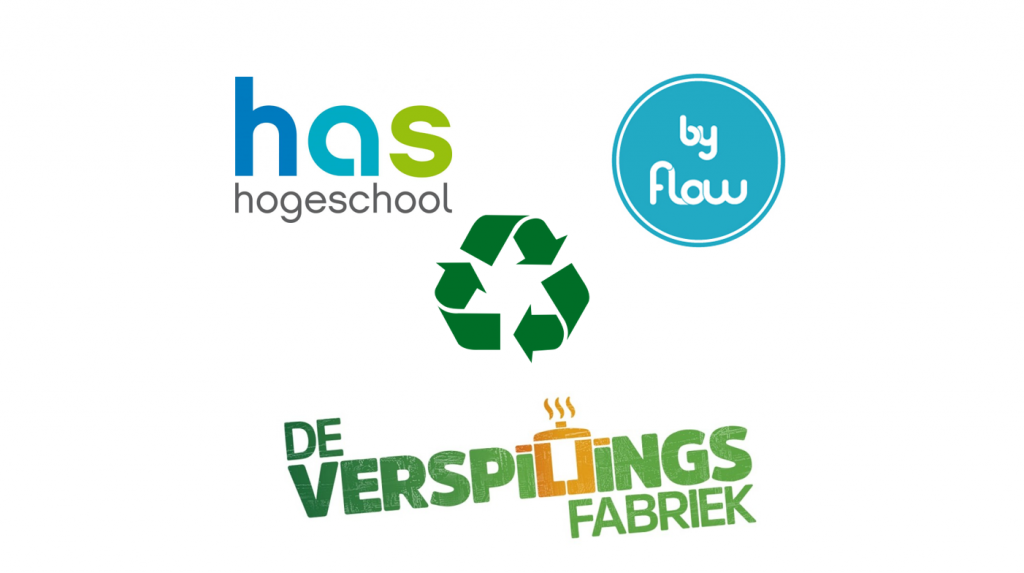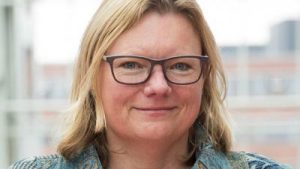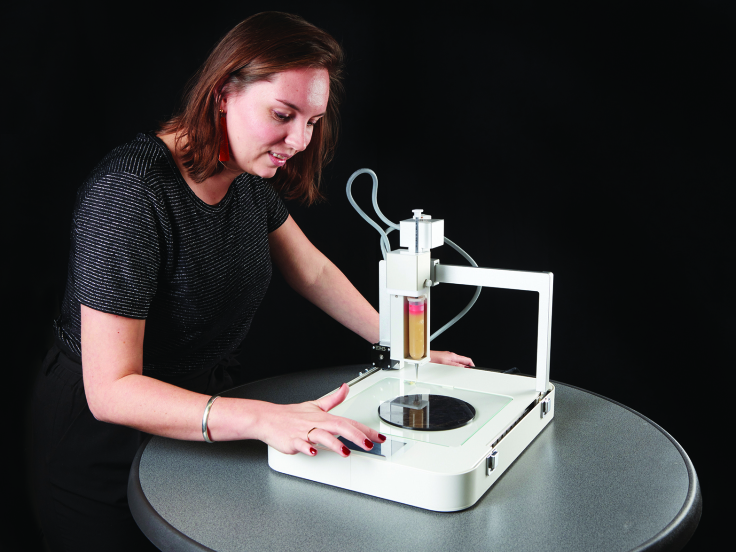Back in 2015, the Dutch company byFlow – then called 3D By Flow – launched their portable and multi-extruder 3D printer “Focus” on Kickstarter. Although their 3D printer reached 39% of its funding goal in order to start the manufacturing process (they were asking for €50,000 but it closed at €19,702), byFlow proceeded to market and make their printer.
byFlow is a family business that was founded in 2015 in the Netherlands, and today it’s one of the leading companies in the 3D food printing market around the world. Their 3D Focus Food Printer is meant to be easy to use and maintain, which makes it accessible to everyone. The Focus is aimed at letting professionals create customized textures, flavors, and shapes through the use of fresh ingredients as well as those ingredients that we usually throw away.
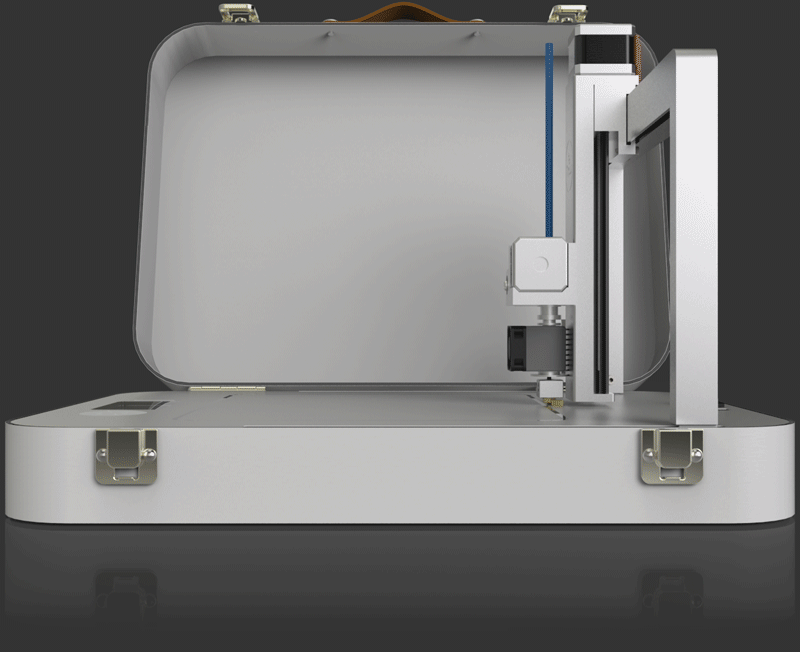 What’s great about the Focus is that it’s portable. This 3D printer can fold up into its compact carrying case making it easy to take it everywhere you want. The case’s size is about 44 x 32 x 11 cm and can be set up in less than 30 seconds. Once it is ready, you can connect the Focus to a computer or plug an SD card containing the STL files in it.
What’s great about the Focus is that it’s portable. This 3D printer can fold up into its compact carrying case making it easy to take it everywhere you want. The case’s size is about 44 x 32 x 11 cm and can be set up in less than 30 seconds. Once it is ready, you can connect the Focus to a computer or plug an SD card containing the STL files in it.
Today, byFlow’s main focus is selling and developing their 3D food printer, as well as giving demonstrations and workshops to the public, and for private events as to increase the interest in the 3D printing of food.
What’s new? byFlow Studio
byFlow is all about personalization. They recently released byFlow Studio, their new platform and second product. The platform provides design tools, recipes, food design databases, and manuals for support, aimed at food professionals in the culinary industry. As byFlow believes, customized food “is a must to base your assortment on the wishes and needs of your target audience, in order to survive the dynamic world of food services.”byFlow Studio helps customers to create their own customized designs. To access this tool, you need to log in at www.byflowstudio.com and click on “Design Tool” to start a new project. If you don’t have a personal account, in order to create one, you will need a license key.
The platform lets you upload different types of files to create unique 3D shapes. It can be text, images, freehand drawings, a photo of someone, and more. Once you’ve upload the file, you can use the edit tools to adjust the design. There are manuals that can help you with the editing tools. Once you’ve finished resizing your design and the software autocorrects it, you can download the design as a printing file and upload it to the Focus 3D Food Printer.Applications: Customizing Hospital Food
When we speak of hospital food, we instantly think of a distasteful dish made out of basic ingredients that are not appealing at all. The Healthcare sector is aware of the importance of food quality and food trends, since its crucial in convincing patients of hospitals, especially elderly residents, to eat more.
Food contributes to the process of recovery after an illness, but sick and elderly patients usually lack appetite. To avoid this, patients’ meals are usually mashed, as to make them soft and as to get rid of anything that could make the meals difficult to swallow. However, serving mashed food has proved to not solve this issue.
byFlow believes that their Focus 3D Food Printer acts as a solution. The Focus has an open cartridge system that can make almost every shape you desire and out of almost every purified food ingredient.“Vegetables, fruits, but also pasta, meat or fish – fresh ingredients must be prepared, processed into a puree and put into a special tube (a cartridge) which is later placed in the 3D Food Printer. A carrot puree in a shape of a carrot, minced fish in a shape of a fish, but also more creative and innovative dishes in new and unique shapes – everything is possible,” explains byFlow.
Ad Verhagen, the gastronomy manager at Zorgwaard (a nursing home in Oud-Beijerland, Netherlands) has been working with byFlow on implementing personalized 3D printed dishes for the residents in the future.
“We are researching what works best and we are very happy to contribute to the development and improvement of this method of meal preparation. As far as I am concerned, a 3D Food Printer will be available at all Zorgwaard’s locations in a few years’ time. What is so beneficial for the residents must be available everywhere,” Verhagen says.
Applications: Fighting One of The World’s Biggest Problems
Did you know over 30% of the food produced in the world is wasted? It’s not just a misuse of resources, it also has a severe impact on climate change. byFlow’s vision is to “enable professionals to create customized shapes, textures and flavors, by using fresh ingredients or ingredients that otherwise would have been thrown away”. As previously mentioned, the Focus 3D Food Printer has an open cartridge system, which allows almost any food ingredient to be used for printing into any personalized shape.
byFlow shares a similar vision with De Verspillingsfabriek, a surplus food factory that produces food products out of rescued ingredients without adding preservatives or chemical additives to them.
“What surprised me mostly is that those ingredients are not even ugly. Being involved in the food industry I’ve been fully aware of the scale of the food waste problem, but I had no idea that so much of even perfectly good food is being wasted. Only due to miscalculations and hard rules of a profit-driven food industry. We love the idea of producing food out of ingredients that otherwise would be wasted and we immediately knew that there is a space for 3D Food Printing in this project,” says Nina Hoff, byFlow’s CEO, referring to the surplus ingredients.
byFlow and De Verspillingsfabriek met and started their collaboration quickly thanks to HAS Hogeschool, the facilitator of the Food Waste Upcycling Project. Antien Zuidberg, HAS University of Applied Sciences lecturer and coordinator of the Food Innovation study programme, guides students into researching possibilities of upcycling food waste by using the Focus 3D Food Printer.
“When we started 2 years ago with 3D food printing at HAS Hogeschool, I was wondering about where we could have a large societal impact with this new technology, and the first idea was: can we upcycle food waste? I would be thrilled if we can develop an application which can become a viable business case, and which can help this new technology forward as well as upcycle food waste to beautiful new products,” adds Zuidberg about the project.
byFlow’s Focus 3D Food Printer is being used as a tool to help transform surplus food ingredients into ready-to-eat products to give them a “second life”. The Food Waste Upcycling Project brings up new possibilities and hopes: thanks to the Focus, De Verspillingsfabriek can diversify its products range that was then limited to soups and sauces.
[Sources: byFlow, byFlow Studio, HAS University, De Verspillingsfabriek]Subscribe to Our Email Newsletter
Stay up-to-date on all the latest news from the 3D printing industry and receive information and offers from third party vendors.
You May Also Like
DyeMansion Debuts Polymer Post-Processing Solutions at Formnext 2024
DyeMansion is shaking up post-processing workflows with three new solutions unveiled at Formnext 2024. Under the motto It Just WorX, the company introduced the Powershot X for blasting and surfacing,...
Nano Dimension Expands Micro-Manufacturing with Exa 250vx 3D Printer
As it continues to push for the acquisitions of Desktop Metal and Markforged, Nano Dimension has introduced a new micro-3D printing system at Formnext. Adding to the Fabrica Tera and...
3D Systems Pushes New Tech and Partnerships at Formnext
As one of the pioneering companies in additive manufacturing (AM), 3D Systems remains a key player to watch at Formnext 2024, where it is showcasing major partnerships, innovative technologies, and...
Formnext Day Three: Rock & Zoll
The biggest news on day three was, of course, the reactions to the band at the exhibitor’s party. The soirée was well attended, with the crowd rocking on until early...


